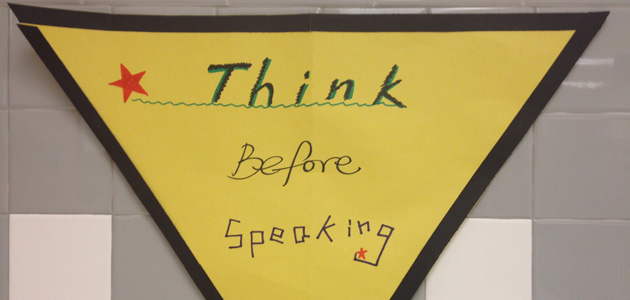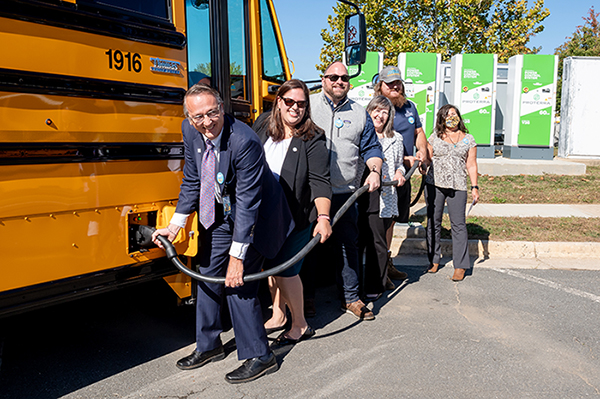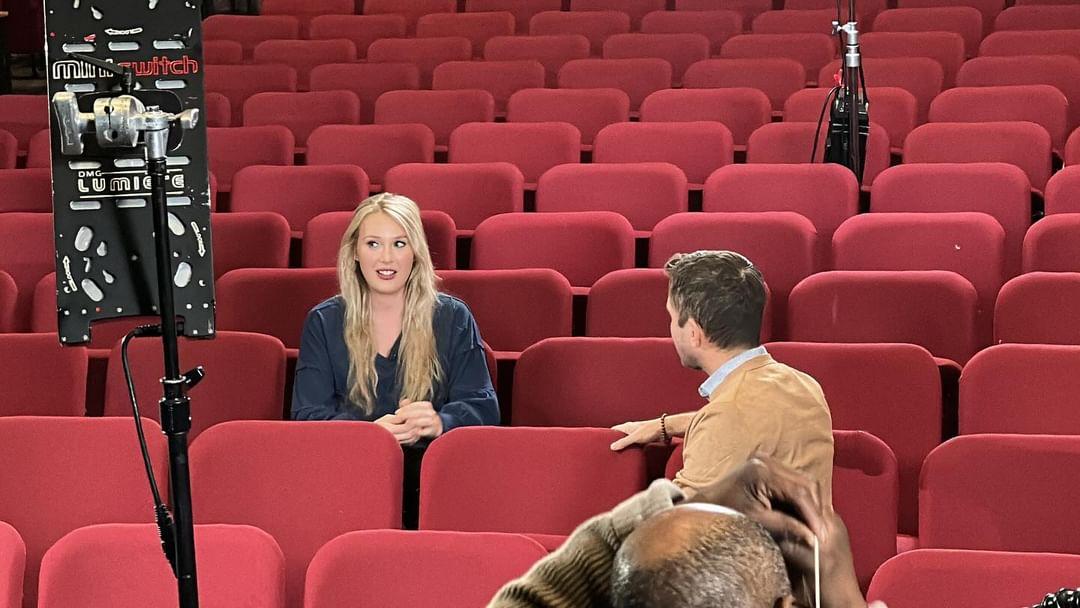FCPS is continuing to work on its goal of knocking out bullying in our schools. AHS celebrated National Sexual Harassment/Bullying Prevention Week by dedicating R1 FLEX on Nov. 12 to the cause, during which students watched various news clips.
One such clip was from a recent 20-20 episode on bullying, which featured a personal story about a girl who was brutally attacked by her bully. Teachers were then supposed to open up their classroom to questions on the topic. The video concluded with a message from Assistant Principal Jamie Carayaiannis about AHS’s dedication to helping any student being bullied.
The video was the conclusion to a week-long campaign at school. Peer mediation classes sponsored Mix-it-Up day on Nov. 9, a national campaign to encourage students to make new friends. The day correlates with Sexual Harassment/Bullying week, but it was originally created during the Civil Rights movement to break racial barriers in high school cafeterias. “[The purpose is] to get students to meet students from other social groups and to break social barriers,” peer meditation teacher Kate Mounteer said. “We’re lucky at AHS, because people mix very well.”
The goal of Mix-it-up Day is to make students realize they are not as different as they seem. Each student received a colored sticker on their hand, which determined what table they sat at and who they sat with. “We hope that people will make new friends that differ from one another,” said Mounteer.
After students made a new friend, they could go up and sign a large poster on the cafeteria wall together. “I think it’s awesome and you get to meet new people,” junior Jason Moujaes said. “Anyone who doesn’t participate is a loser.”
In fall of the 2009-2010 school year, sixth, eighth, tenth and twelfth grade students took an official county-mandated survey. The survey covered sex, drugs, alcohol, bullying and other unhealthy habits. Recently, FCPS has released the results of the survey with an executive report that explains the trends. There were 42,582 students polled in 21 high schools, four secondary schools, 22 middle schools, 126 elementary schools and four alternative schools.
The official report stated, “Youth who are bullied are more likely to report carrying a weapon; using drugs, alcohol, or cigarettes; being depressed; or considering suicide.” Over half of the students reported being bullied or teased at some point, but only nine percent reported being bullied over 20 times within the past school year. This is a two percent decrease from the 2008-2009 school year.
The number of students who stated someone has taunted them for their race has decreased to less than half of the students polled. The report also states that cyber-bullying is most frequent in eighth grade and decreases as the students age. The majority reported that it happens to them less than two times a year. Last year was the first time the survey featured questions that specifically focused on cyber-bullying.
The survey also included questions about gang-related activities, which fell the bullying section. Less than four percent of students reported that they had ever been in a gang. This data did not change from the 2008 report. The 2010-2011 survey was distributed to students on Wednesday, November 10 and Thursday, November 11 to sophomores and seniors. Some of the questions asked whether the student had been cyber-bullied, been a cyber-bully, whether or not they would report cyber-bullying if they saw it and whether they believed they had the right to say whatever they want on the Internet.
Though FCPS is pleased with the data, they are still determined to limit the amount of bullying within the schools because it is still considered a problem. The results of a poll posted on TheA-Blast.org show that 61 percent of the students who responded believe that it only happens sometimes, while 26 percent think that it occurs frequently.
There are a number of reasons that experts believe the aggressors bully their victims. Some believe that certain students bully because they want to feel stronger or because they want to fit in at school. “I bully people because it makes me feel better about myself. It makes me feel stronger because other people are weaker,” junior Ziya Jahangir said.
Jahangir began bullying in elementary school, where he would verbally berate friends and other classmates. He would even physically hurt his peers from time to time. Sometimes it stemmed from negative comments from other people, other times he would bully without a reason. He began bullying more when he began middle school. “Once middle school started I wanted to have a new persona. I wanted to fit in and no one would be friends with a scrub.”
As a high school student, Jahangir has used the Internet to bully. Social media outlets like Facebook have given him the opportunity to target his victims from behind the computer. “I’ve verbally harassed people several times on the Internet because I get angry at people. I’ve harassed people by making fun of them and their friends,” said Jahangir.
Jahangir does feel regret some of the things he has done to his fellow students. “I feel it’s a negative thing personally, even though I do it. It portrays your character as an evil one, because you’re attacking people physically and mentally in order to feel better about yourself.”
Many students are reluctant to discuss their experiences with bullying because it was a painful part of their past. Others use their experiences to bring about change from their peers. Junior Lena Nour struggled to cope with ongoing bullying in middle school. When she came to AHS, she was able to move on and start fresh without the fear of being tormented. “In middle school I was bullied, but I overcame the obstacles.”
Nour was bullied by two girls in her grade, but received the brunt of the bullying from one of them in particular. She recalls certain instances where bullies would do things to upset her, and at the time they succeeded in doing just that. “She would push me and call me names. She had to feel like she was powerful. This other girl took my stuff and put it in a trashcan.”
At the time, Nour tried to ignore the girls and did not confront them or any adult about their behavior. “I let the situation die out until she moved away,” said Nour. “If the situation happened again I would act more maturely.”
Junior Paulina Stehr is a member of AHS’s Gay/Straight Alliance. The GSA holds bi-monthly meetings to discuss various topics, many times including the issue of bullying. “We usually address bullying and if people are confused we can help them figure their issues out.”
Stehr has had her own battles with bullying, which stemmed from her involvement with the GSA. Since becoming a member she has had to deal with various rumors about her sexuality.
“I’m straight. People started spreading rumors that I was a lesbian,” said Stehr. “Whenever I told people that I was in the GSA they would say “Oh, you’re gay.” As time progressed, it continued to escalate and Stehr found out that people were talking behind her back. “First people thought I was weird. Eventually people called me a faggot.”
Despite the rumors and name-calling, Stehr stands firm in her beliefs and is a proud member of the GSA. She tries to not let the bullying get to her, and instead uses it to lend her support to the gay community. “I’m fine with it because I know I’m not. The whole reason I’m in the GSA is because I’m a huge supporter of gay rights.”
The efforts of Bullying/Sexual Harassment week have made many students feel more comfortable. The discussions in class prompted many interesting discussions that opened dialogue between the students. Though much of the material has been taught to students since elementary school, the personal stories focused more on the forms of bullying found in high school. “We had already learned that stuff before,” said sophomore Alisa Askovic. “I was shocked by the stories.”














